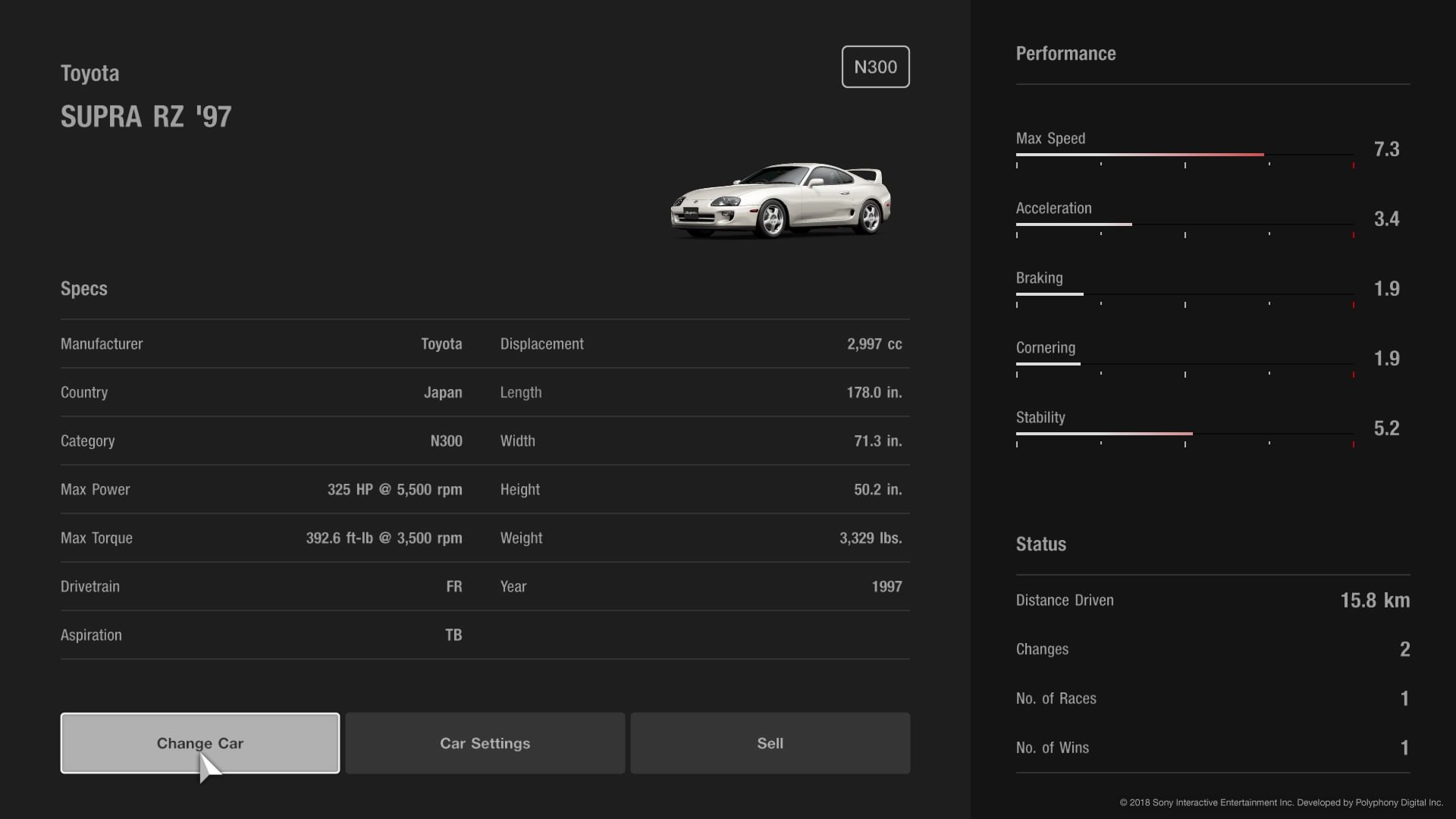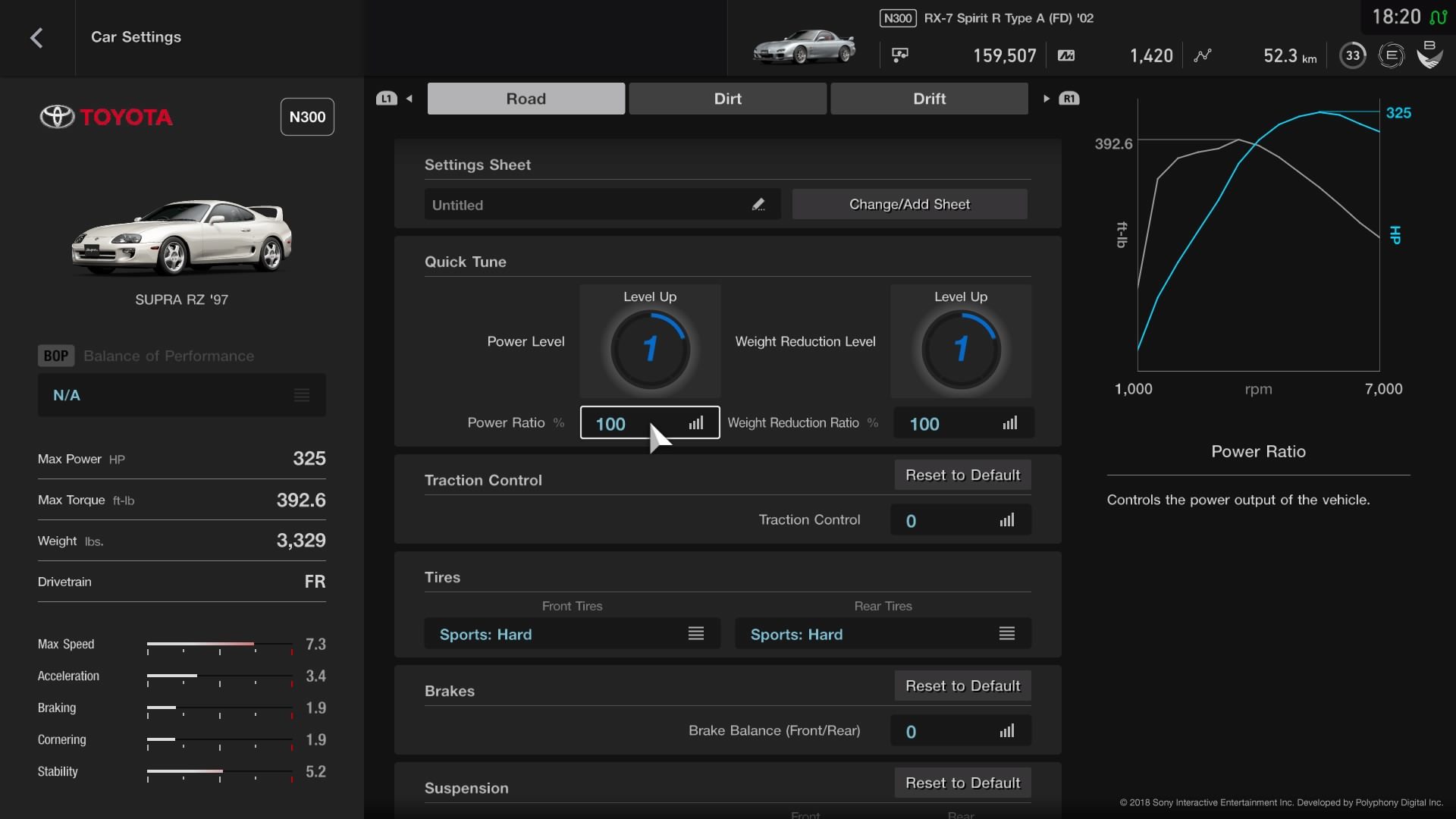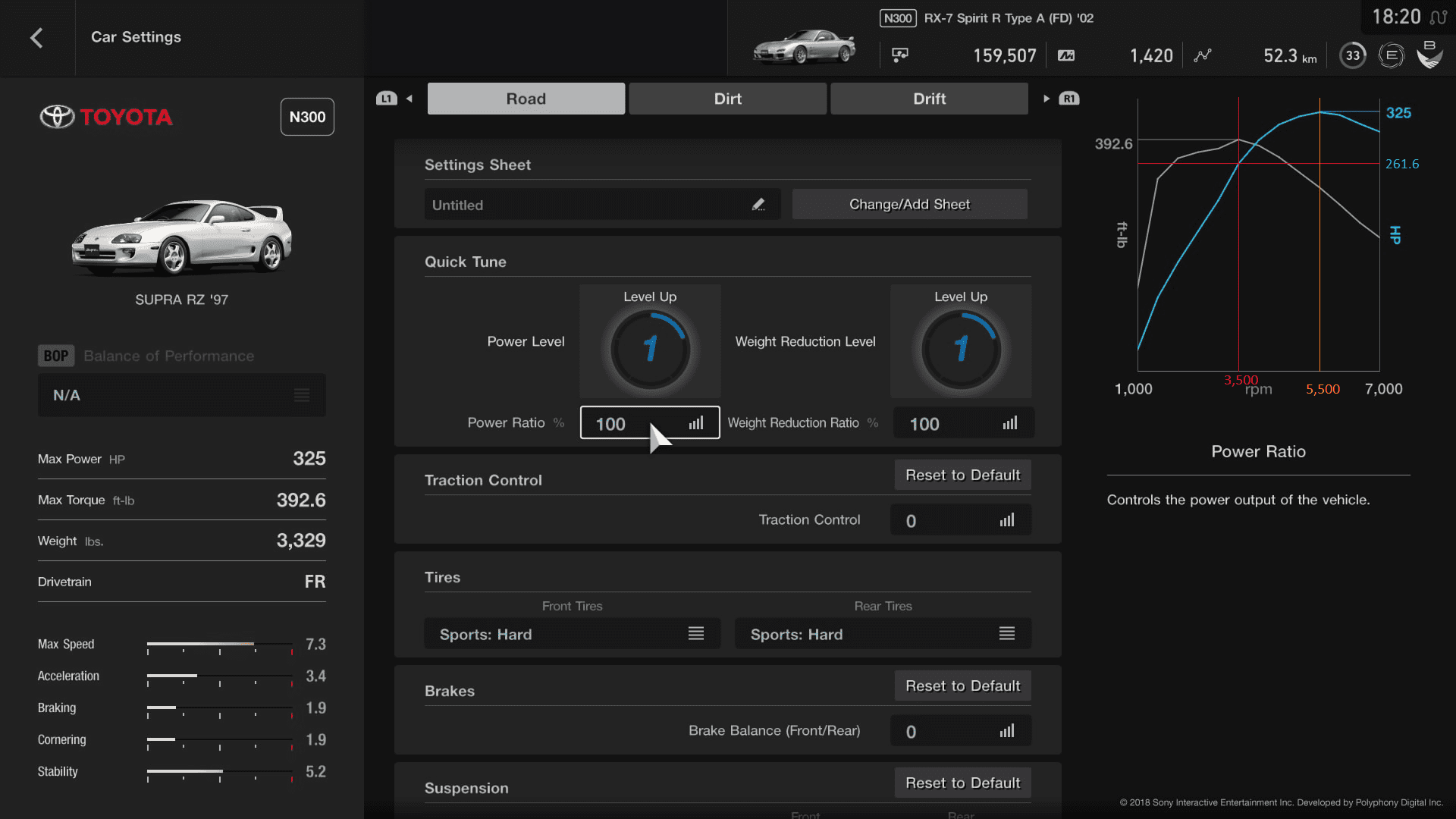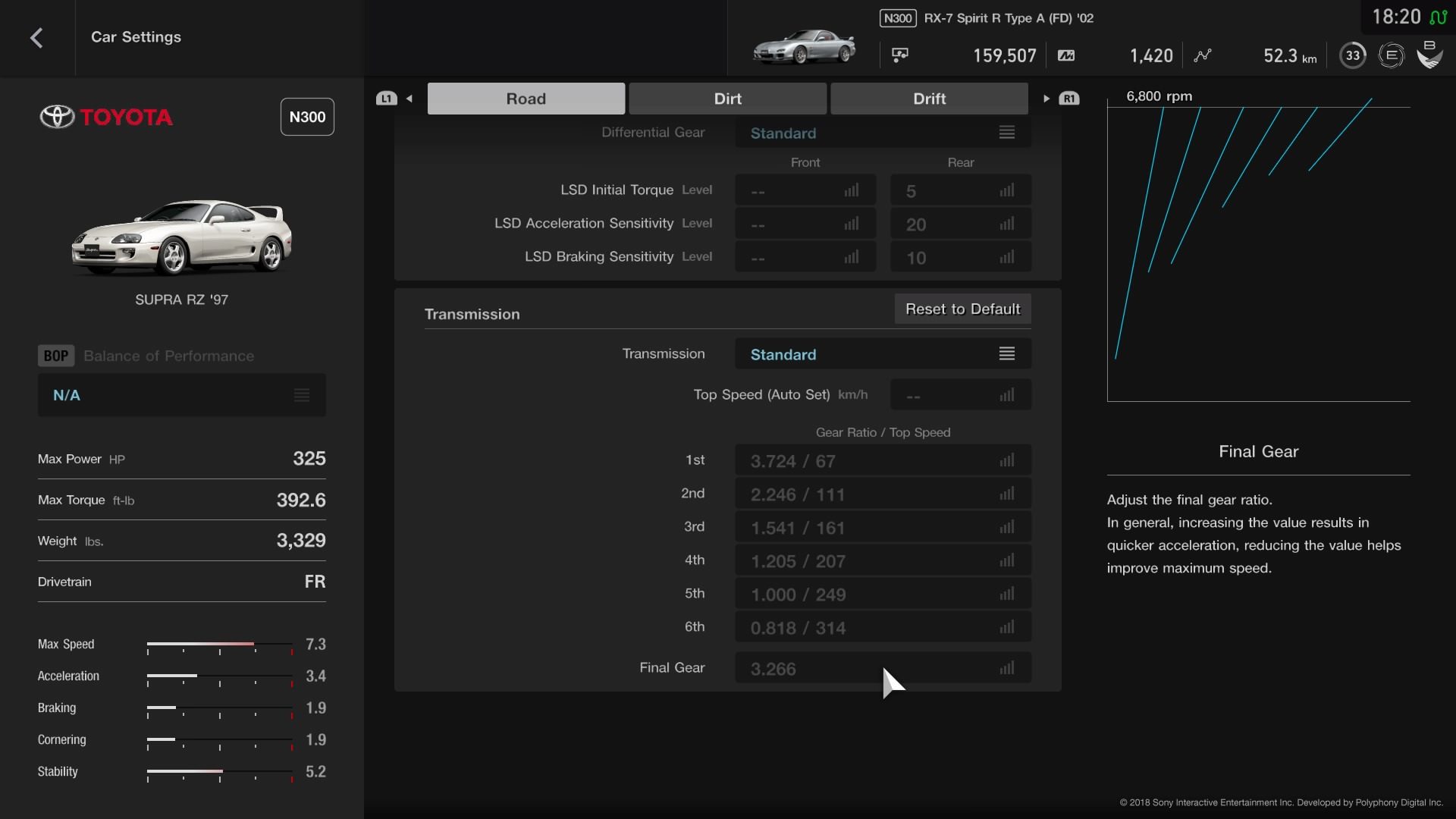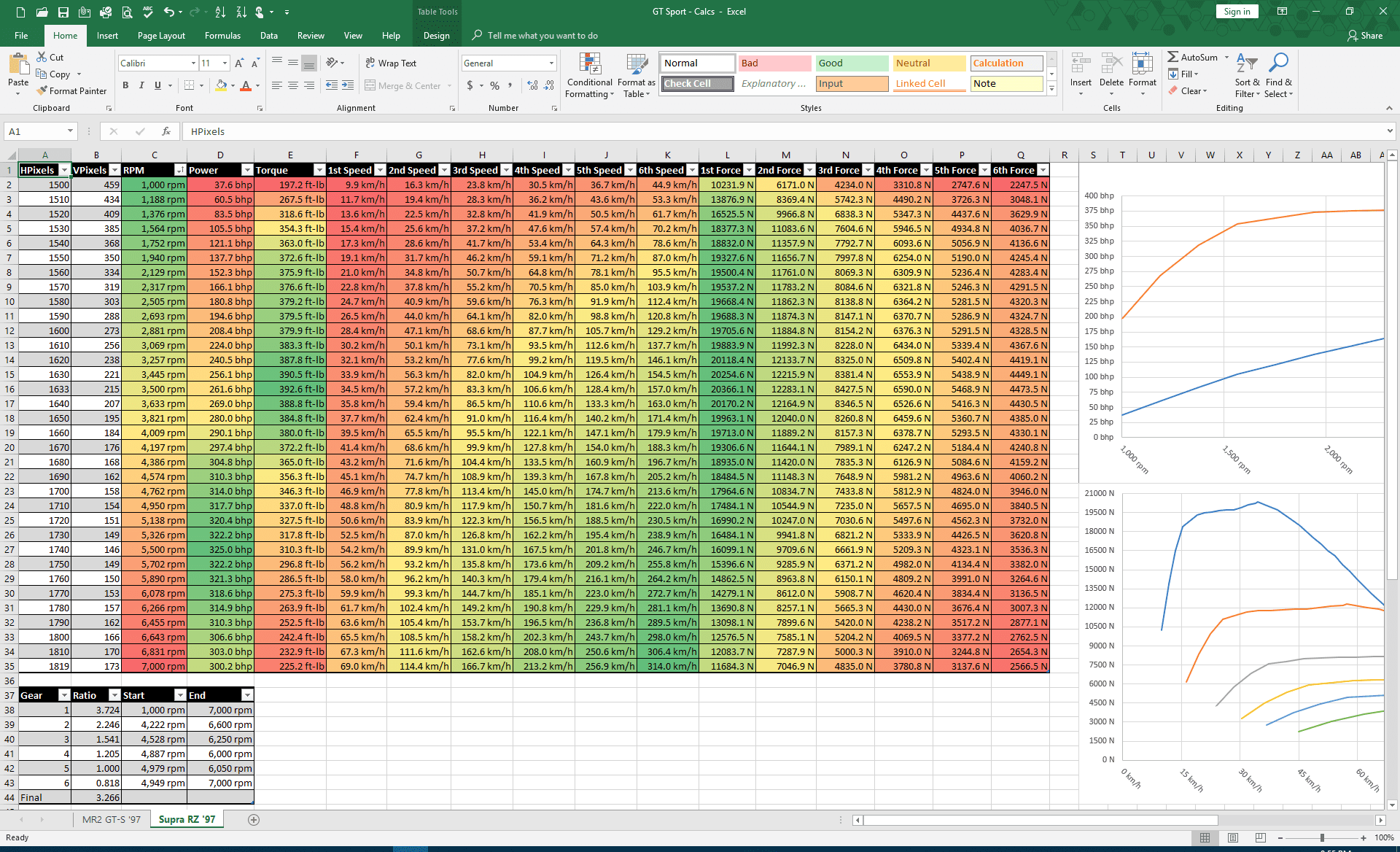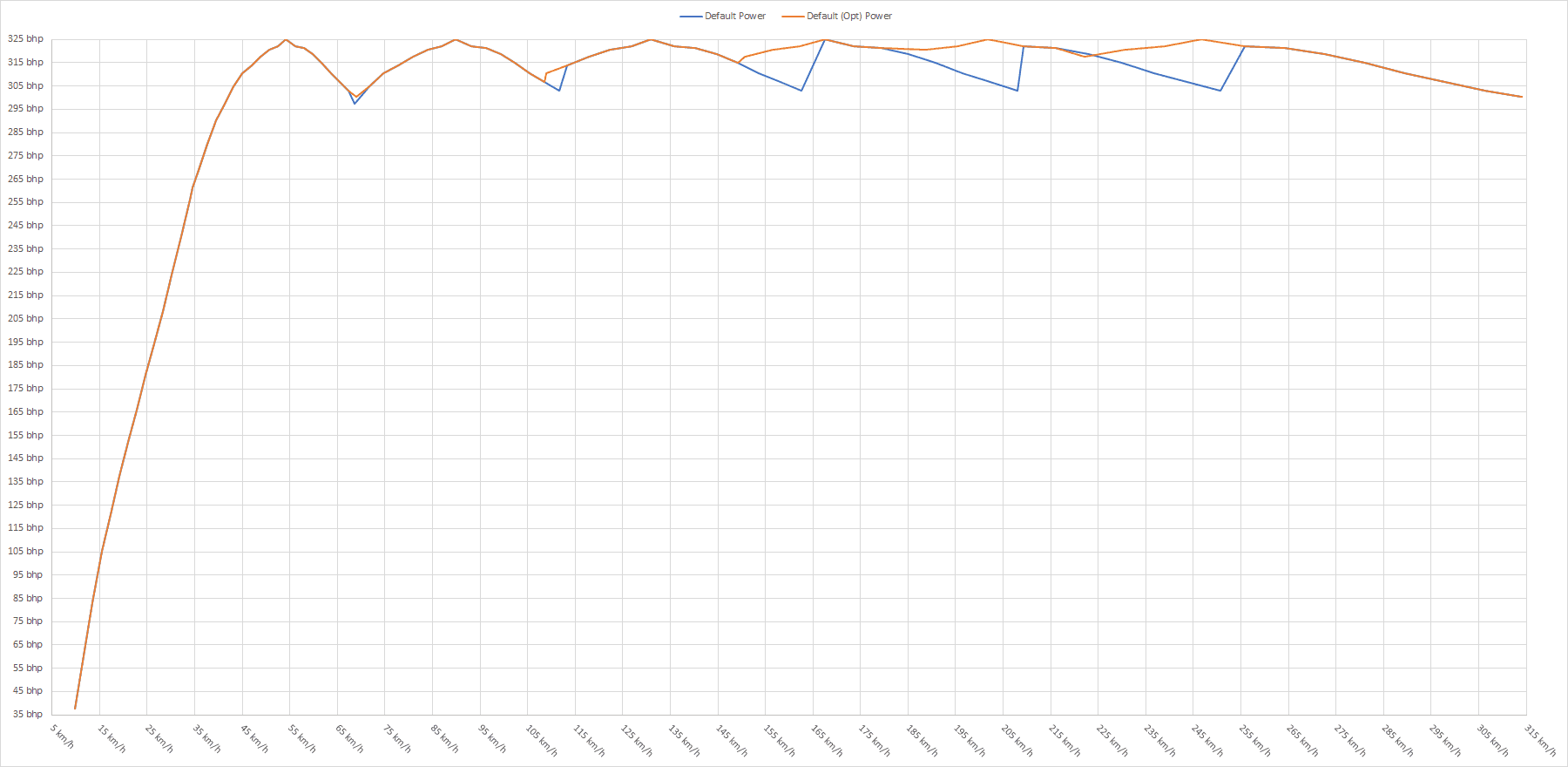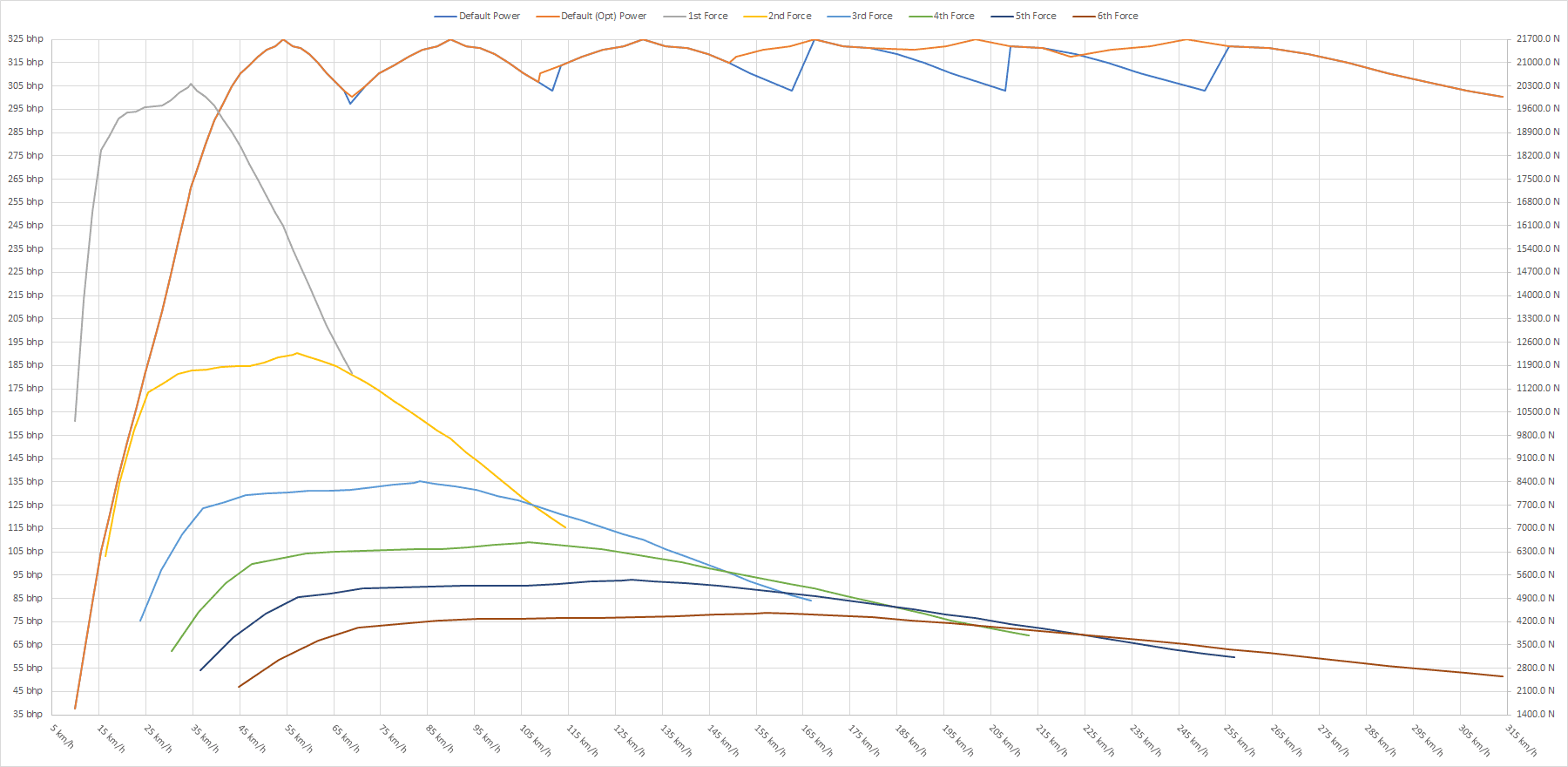Here's another example:
Here we have the high-level overview of the Toyota MR2 GT-S '97
It has a peak power output of 243 bhp at 6000 RPM and a peak torque output of 224.2 ft-lb at 4000 RPM (170.8 bhp)
As shown on the power graph, the peak power is well before the 8000 RPM fuel cut-off point.
Using MS Paint to see the power drop off, we see that we're making the same amount of power just prior to the fuel cut-off (171 bhp) as we are at 4000 RPM (peak torque). Based on pixels in MS Paint, this is approximately 7800 RPM. Power drops off slightly between 6000 RPM and 6500 RPM from 243 bhp to 239 bhp before diving sharply. Power drops off faster after 6500 RPM than it does below 6000 RPM (-5.2 bhp per 100 RPM vs. -3.6 bhp per 100 RPM).
Here we see the stock gear ratios of 3.230, 1.913, 1.258, 0.918, and 0.731 with a final drive ratio of 4.285. The default shift point is 7300 RPM.
Here we can see the shift indicator starting to flash just before hitting 7300 RPM.
Again, using pixels in MS Paint, we can estimate power at 7300 RPM to be 199 bhp, a 44 bhp drop from peak at 6000 RPM.
Now, if we shift at 7300 RPM in each gear, we'll end up at the following RPMs in the next gear:
1st -> 2nd: 7300 RPM -> 4323 RPM
2nd -> 3rd: 7300 RPM -> 4801 RPM
3rd -> 4th: 7300 RPM -> 5327 RPM
4th -> 5th: 7300 RPM -> 5813 RPM
Average power:
2nd: 217.7 bhp
3rd: 223.2 bhp
4th: 227.1 bhp
If you change your shift points to:
1st -> 2nd: 7500 RPM -> 4442 RPM
2nd -> 3rd: 7300 RPM -> 4801 RPM
3rd -> 4th: 7000 RPM -> 5108 RPM
4th -> 5th: 6800 RPM -> 5415 RPM
Average power:
2nd: 218.9 bhp (+1.2)
3rd: 225.9 bhp (+2.7)
4th: 230.9 bhp (+3.8)
With a parabolic power curve like this, you want to shift when power in current gear = power in next gear.
If you customize your transmission, your goal is to stay as close to peak power as possible (though you may have slightly different setups from circuit to circuit to maximize power coming out of certain corners for example).
Example:
Custom Transmission (Default Transmission)
1st: 2.609 (3.230)
2nd: 1.698 (1.913)
3rd: 1.280 (1.258)
4th: 1.000 (0.918)
5th: 0.781 (0.731)
Final: 4.011 (4.285)
Shifts:
1st -> 2nd: 7300 RPM -> 4751 RPM
2nd -> 3rd: 7100 RPM -> 5352 RPM
3rd -> 4th: 6850 RPM -> 5352 RPM
4th -> 5th: 6850 RPM -> 5350 RPM
Average Power (50 km/h to 250 km/h):
Default Transmission (shift @ redline): 224.0 bhp
Default Transmission (optimum shifts): 225.1 bhp (+1.1)
Custom Transmission (optimum shifts): 228.7 bhp (+4.7)


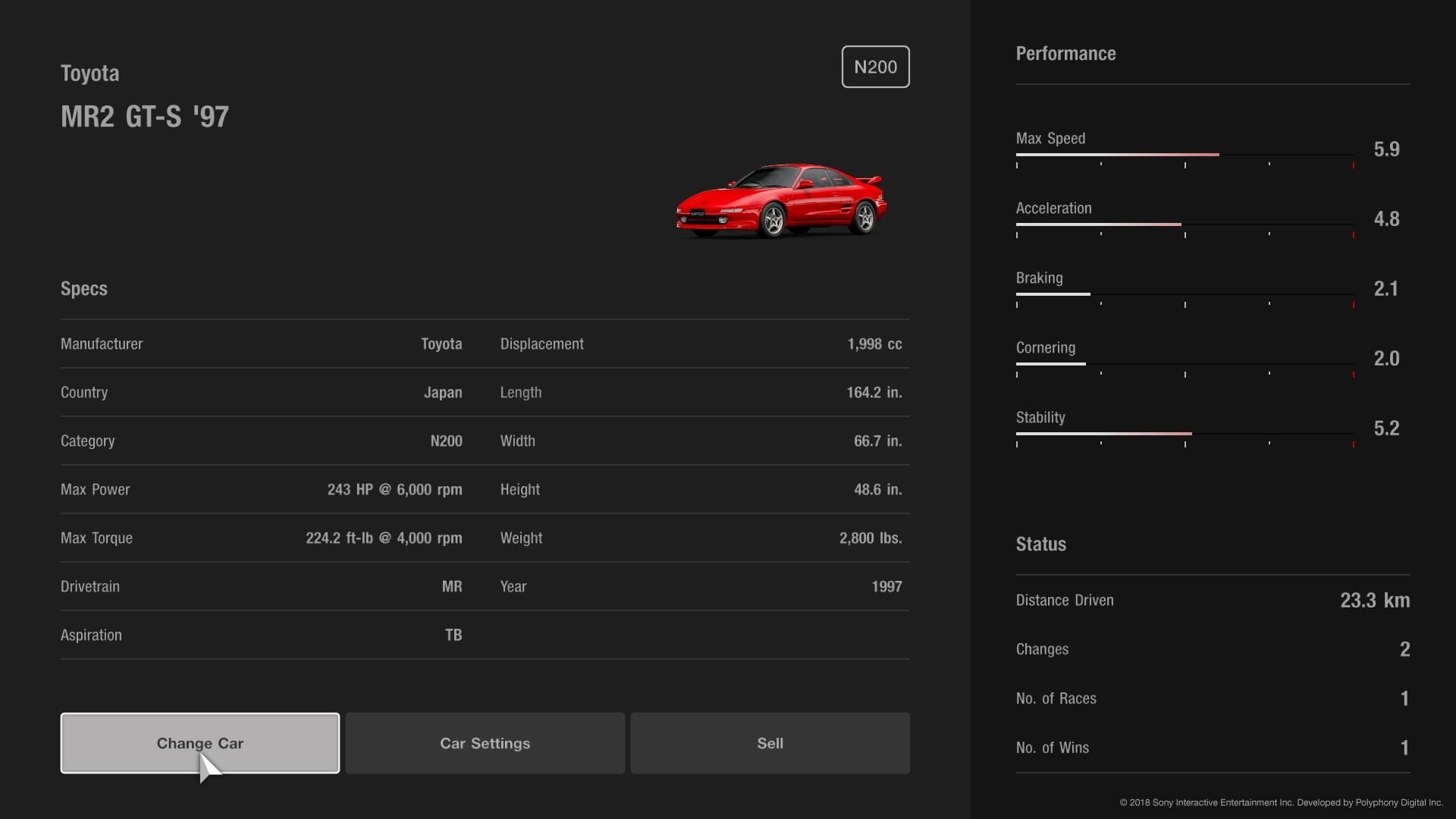
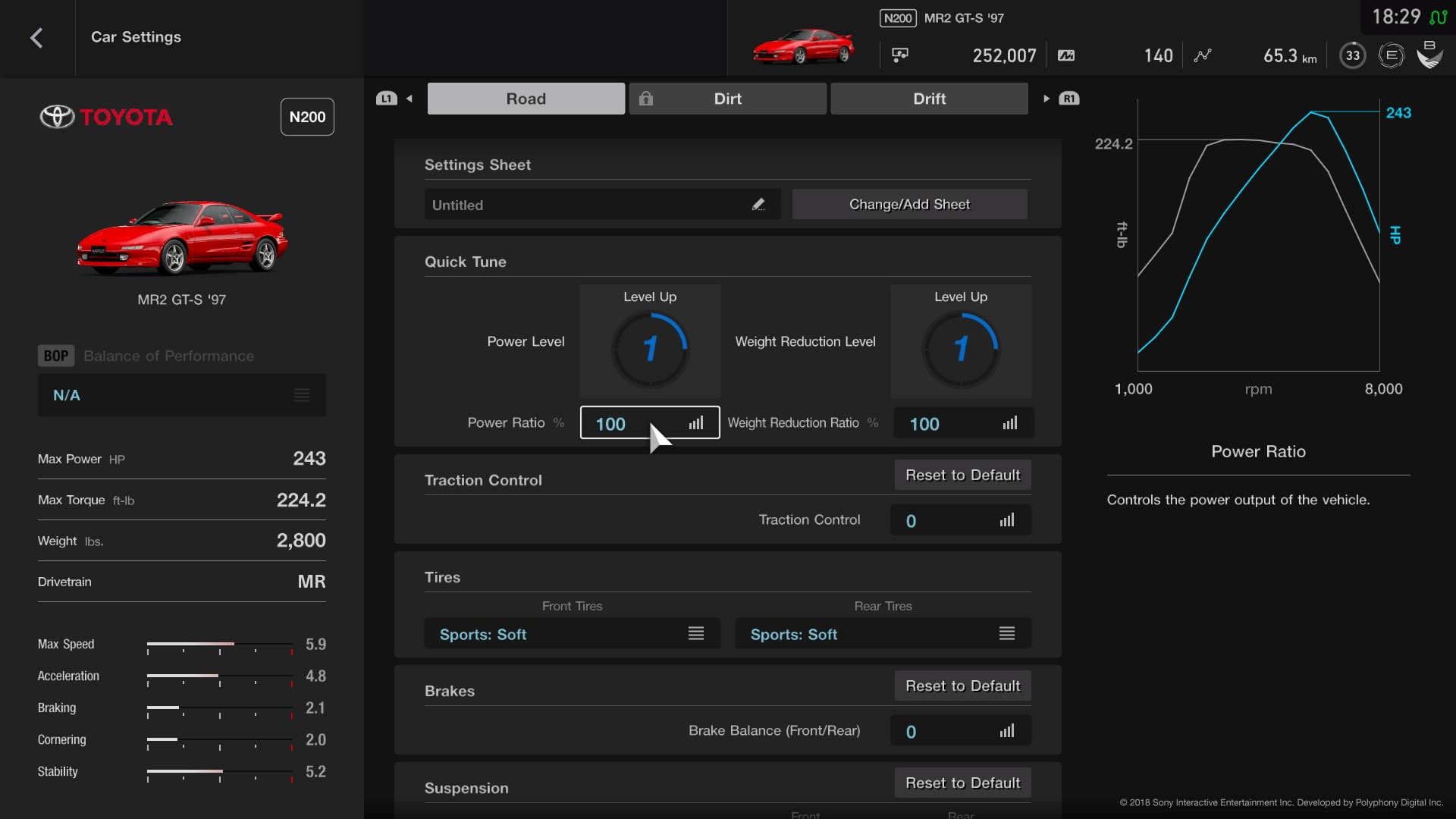
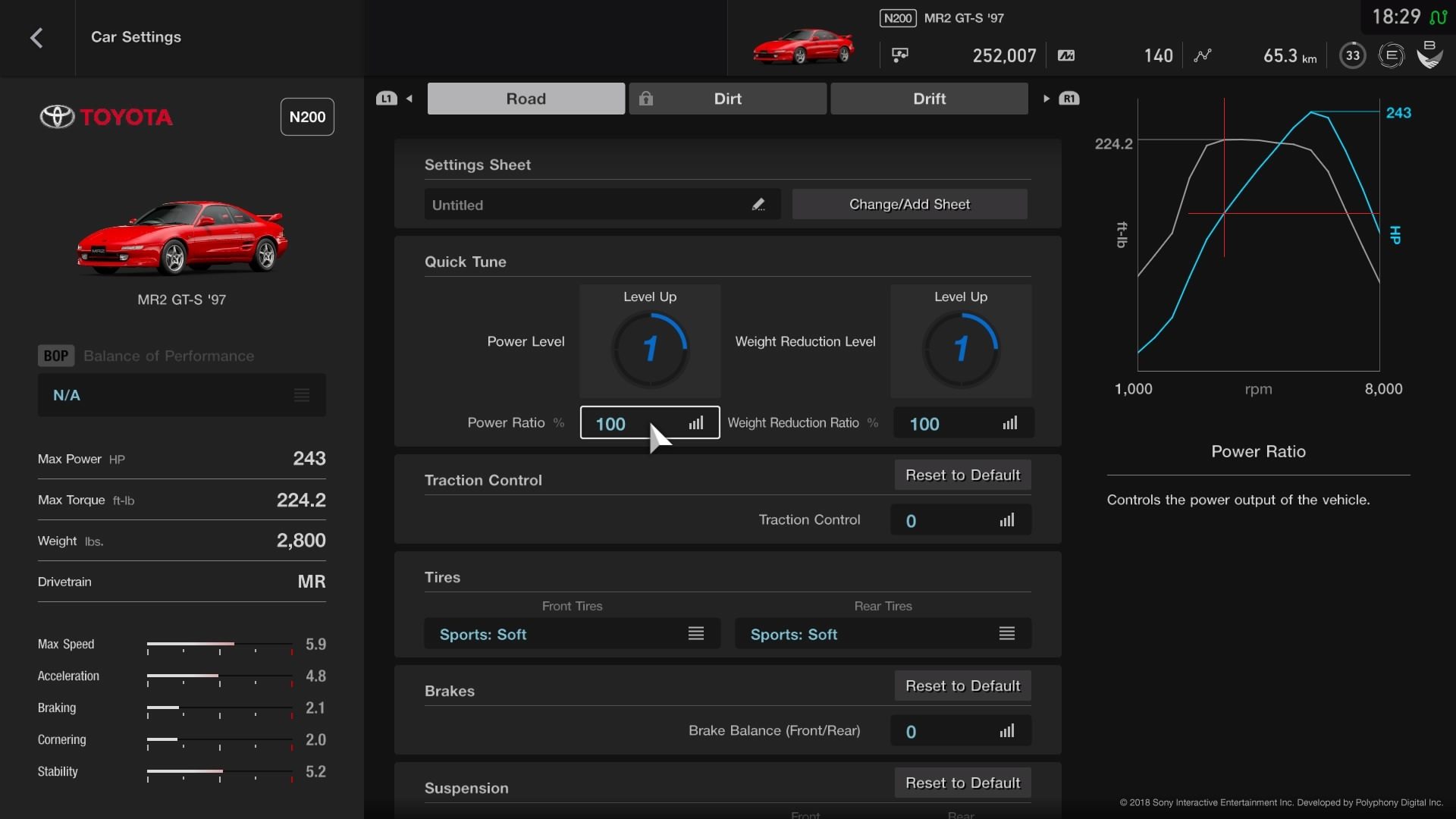
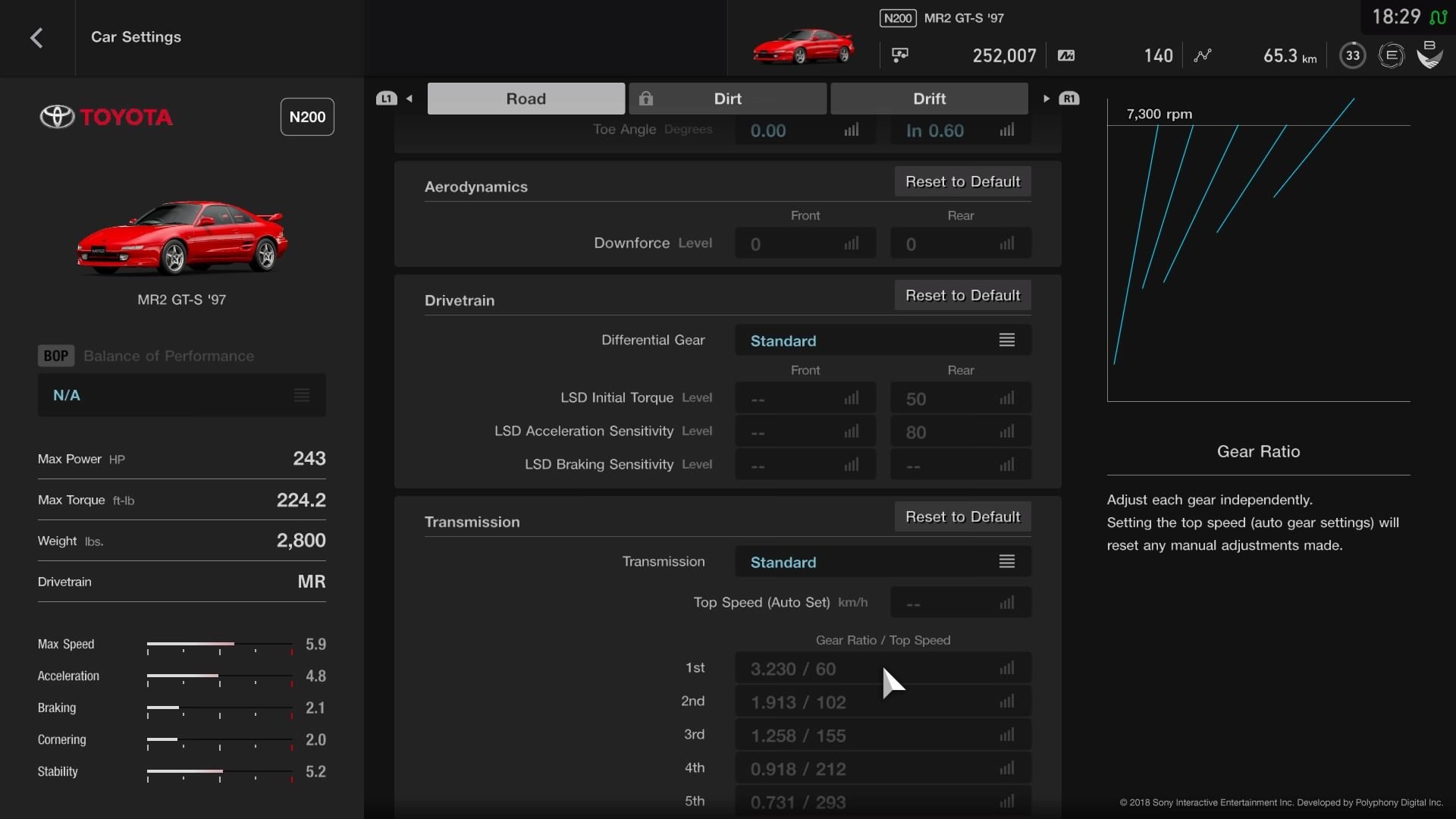

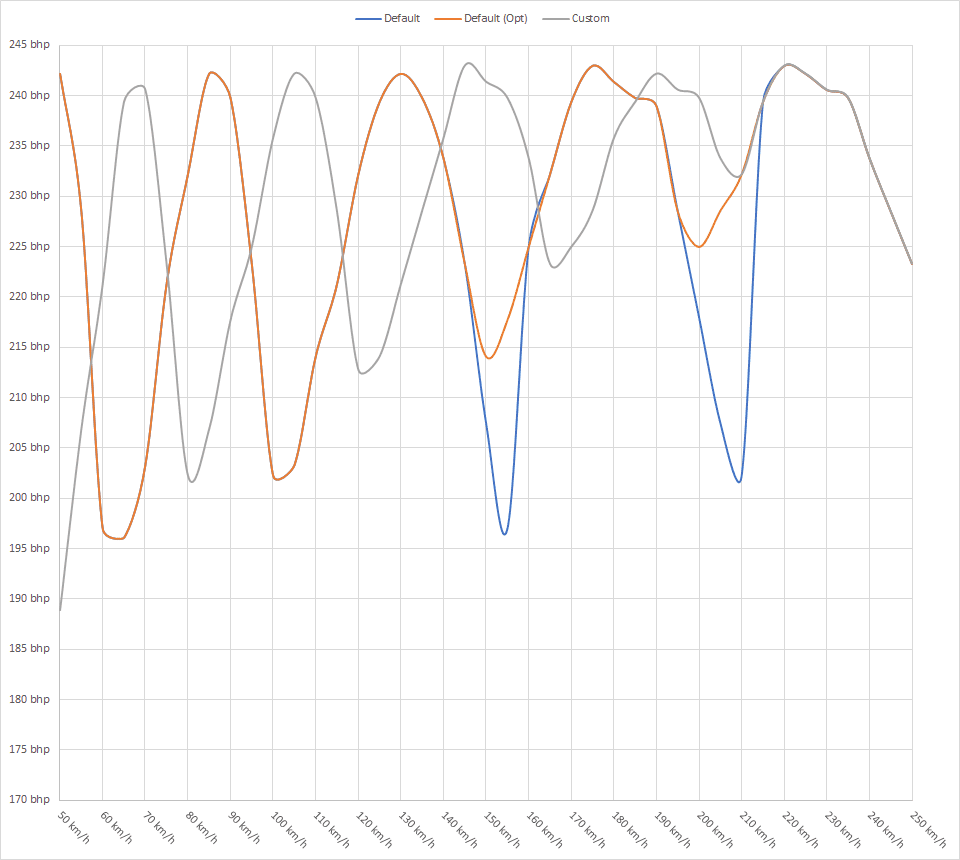

 ? I’ve just been eyeballing it so far, but your numbers are next level 👍
? I’ve just been eyeballing it so far, but your numbers are next level 👍